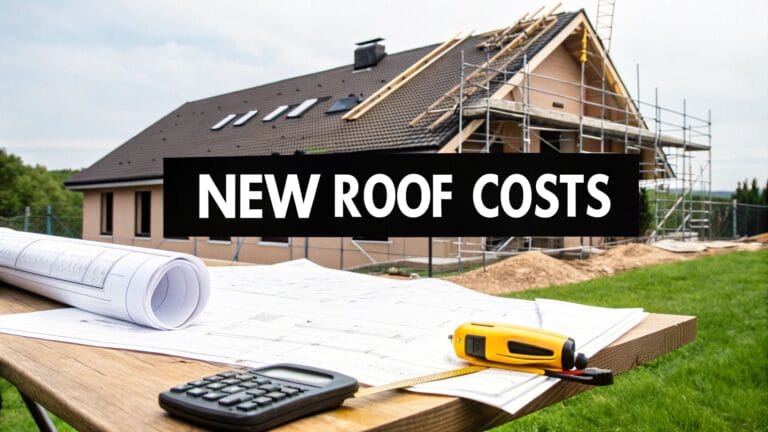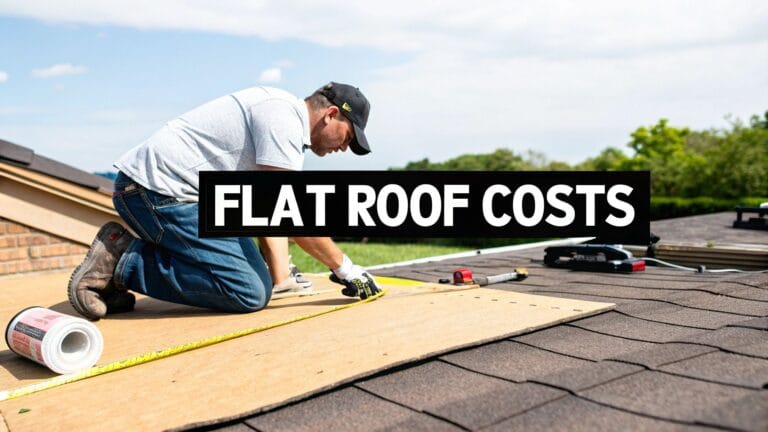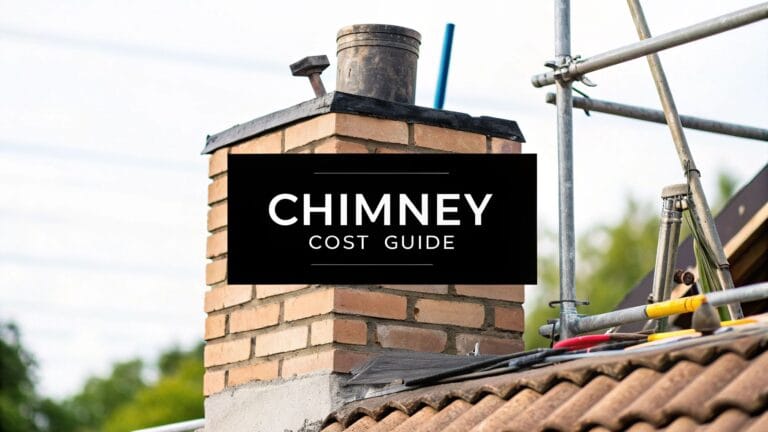
Cost to Fix Roof Leak: Your UK Repair Expense Guide
Discover the true cost to fix roof leak in the UK. Our guide covers tiles, slate, and flat roofs to help you budget your repair confidently.
That sinking feeling you get when you spot a damp patch on the ceiling is a universal homeowner experience. It's stressful, but understanding the cost to fix a roof leak can take a lot of that worry away. In the UK, a straightforward fix might only set you back £150, while more involved problems typically average between £400 and £800. The key is acting fast.
Your Quick Answer to UK Roof Leak Repair Costs
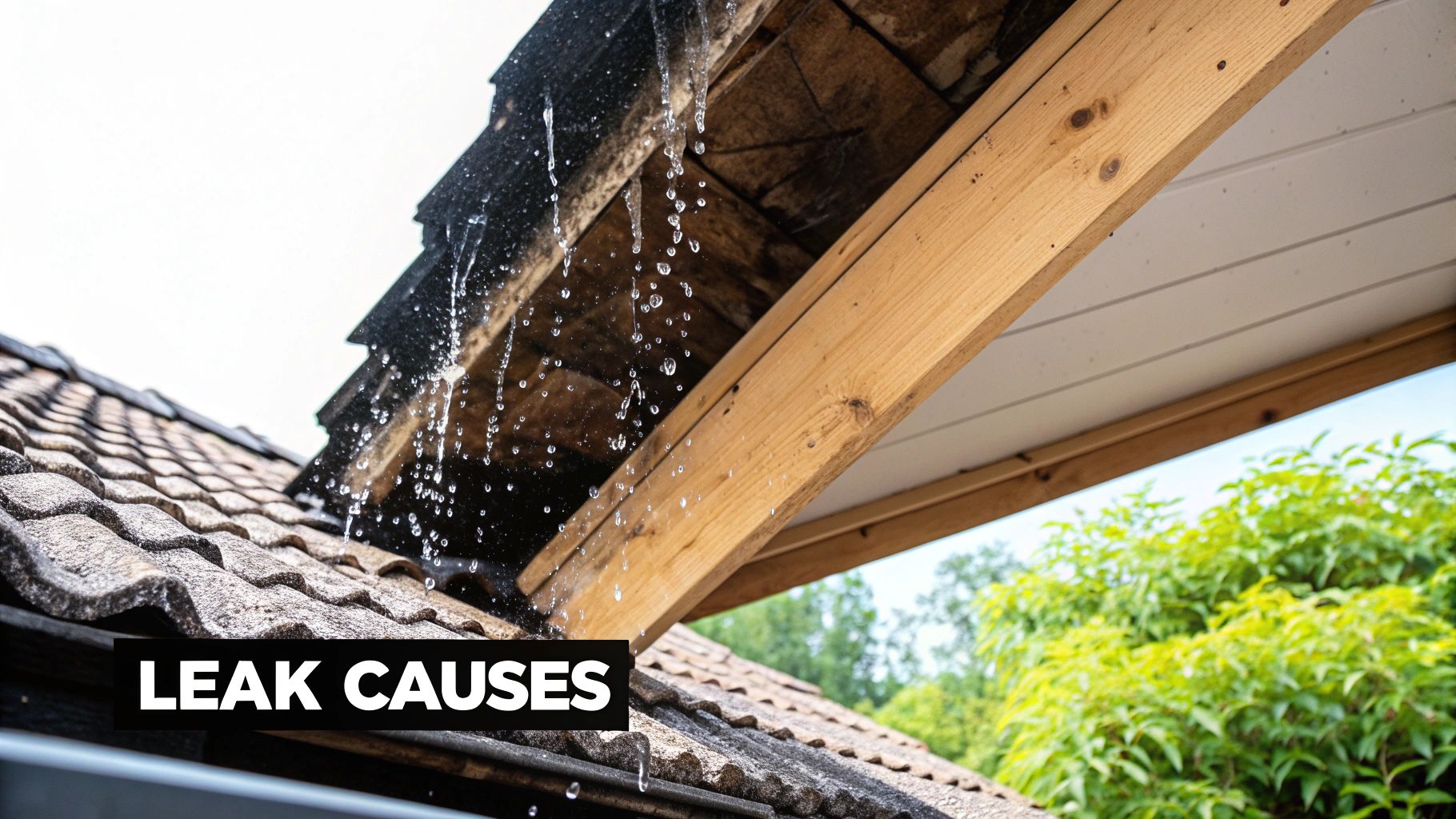
That drip-drip-drip isn't just an irritating noise; it's your home's alarm bell, telling you it’s time for a professional look. Getting a handle on the potential repair bill is the first step to fixing the problem without breaking the bank. Ultimately, the final price comes down to two things: how bad the leak is and how quickly you get an expert, like us at Evershield Roofing, on the job.
Think of it this way: a single slipped tile is a simple, quick fix – not much different from changing a fuse. But if you leave it, water gets in, soaking the underfelt and timbers. Suddenly, you're not just changing a fuse; you're dealing with a major electrical fault that's far more complex and expensive to sort out.
Breaking Down the Initial Expenses
Across the UK, the national average cost to fix a roof leak for 2025 is estimated to sit somewhere between £200–£800. This wide range reflects the difference between a simple patch-up and a more substantial repair.
- Minor Leaks (£150 – £300): This usually covers things like replacing a few cracked tiles, sealing a gap around a vent pipe, or re-bedding a ridge tile. These are quick jobs for a pro like our team.
- Moderate Leaks (£400 – £800): This is where you might need a section of felt replaced or multiple tiles and battens renewed. The damage is more widespread but hasn't yet compromised the main structure.
- Major Damage (£1,000+): If water has been getting in for a while, costs can climb into the thousands. This happens when rot has set into the structural timbers, requiring carpenters as well as roofers.
This is why we always say that early detection is your best financial defence. Waiting can easily double the final bill. You can find out more by exploring these 2025 roofing cost estimates and see for yourself how acting fast keeps costs down.
To help you get a clearer picture, here’s a quick summary of what you might expect to pay for different types of roof leak repairs in the UK.
Estimated UK Roof Leak Repair Costs at a Glance
This table breaks down typical costs for various common roof leak scenarios, giving you a starting point for your budget.
| Repair Type | Average Cost Range (£) | Typical Timeframe | Notes |
|---|---|---|---|
| Slipped/Cracked Tile Replacement | £150 – £250 | 1-2 hours | A very common and quick fix, assuming easy access. |
| Leaking Flashing Repair | £250 – £500 | 2-4 hours | Involves resealing or replacing lead/mortar around chimneys or walls. |
| Flat Roof Patch | £300 – £600 | Half-day | Dependent on the material (felt, EPDM, GRP) and size of the patch. |
| Valley/Gutter Repair | £400 – £800 | Half-day to a full day | More complex as it involves a critical junction on the roof. |
| Structural Timber Repair | £1,000+ | 1-3+ days | This is a major job often requiring scaffolding and additional trades. |
Remember, these are just estimates. The actual cost will depend on the specifics of your roof and the extent of the damage.
The single most important thing to remember is this: the longer you put it off, the more it will cost. A small, manageable leak can spiral into a huge project involving plasterers, decorators, and even mould removal specialists if it’s ignored.
At Evershield Roofing, we start with a transparent, no-obligation survey to give you a precise picture of the problem. This means you get a clear, upfront quote with no hidden surprises, allowing you to budget with confidence and get your home protected.
Don't let a small drip turn into a flood of unexpected expenses—contact our team today for a swift, reliable solution.
Key Factors That Drive Your Final Repair Bill
Ever wondered why one quote for a roof leak comes in at £150, while another lands closer to £800? It’s not just a number plucked from thin air. The final bill is a direct reflection of the specific details of your roof and the nature of the leak. Understanding what drives these costs is the first step to decoding your quote.
Think of it like a car MOT. The initial test might be a fixed price, but if the mechanic discovers a worn-out part that needs replacing, the final cost will naturally go up. It’s the same with your roof; the leak you can see is often just the symptom, and our job is to diagnose the root cause.
Your Roofing Material Matters
The very first thing we look at is what your roof is made of, as this is one of the biggest factors in the repair cost. Different materials demand different skills, tools, and time.
For example, swapping out a couple of cracked concrete tiles is usually a quick and relatively inexpensive job. But if you have a traditional Welsh slate roof, that’s a different story. The slates are more delicate, and finding a matching replacement can be a challenge in itself, requiring a specialist touch. Likewise, patching up a modern GRP flat roof involves different techniques and materials than, say, a traditional felt roof.
Location and Accessibility
It’s not just what we’re fixing, but where. A leak that’s easy to get to—say, on a single-storey extension with a gentle slope—means we can get straight to work, keeping labour time down.
However, if the problem is on a steep, three-storey townhouse, things get more complicated. Safety is our top priority, which often means erecting scaffolding. Just for access, scaffolding can add £200 to £500 to the total bill. It’s an essential cost for ensuring a safe and proper repair, but it’s a significant one to be aware of.
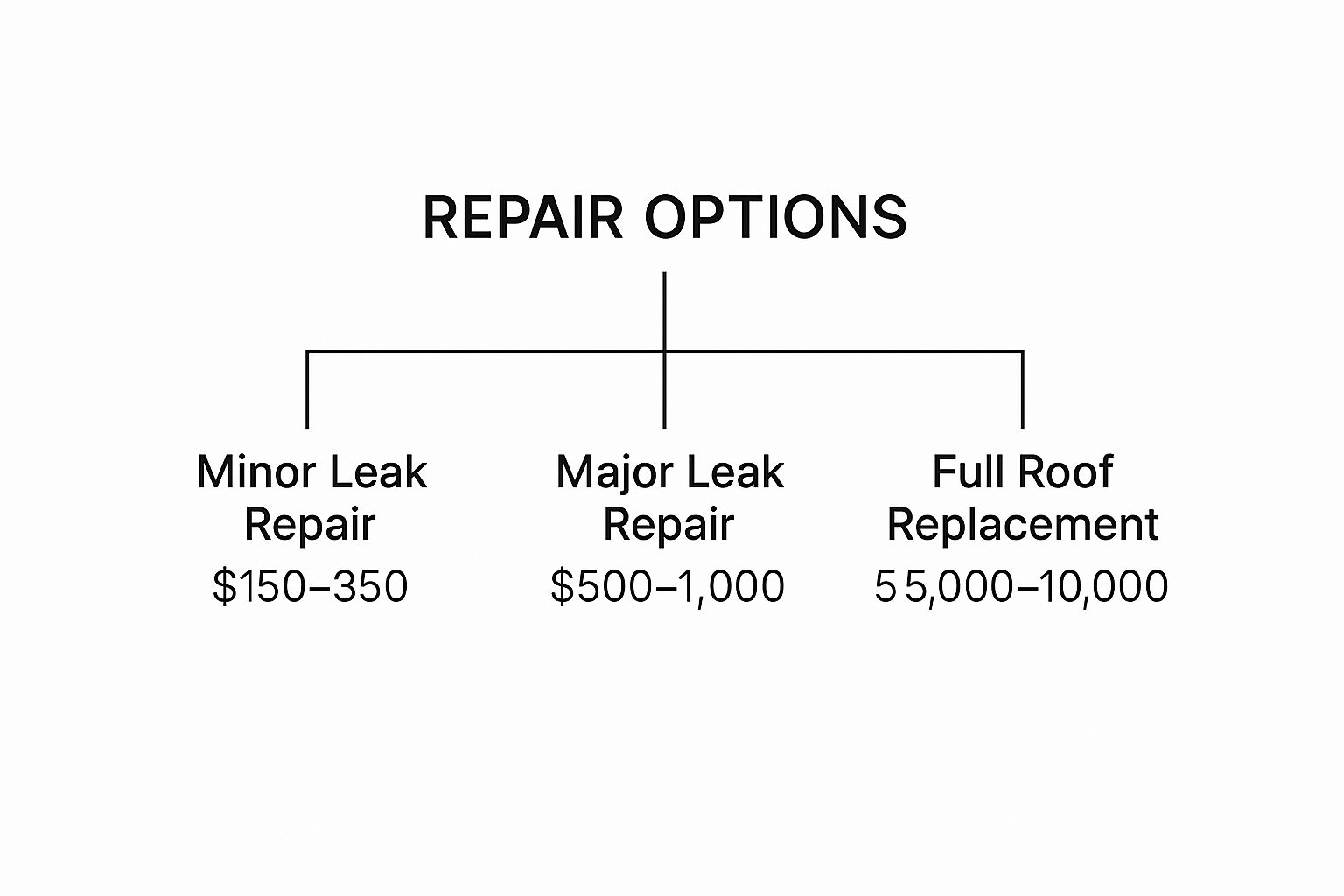
As you can see, a small, straightforward fix is one thing, but the job can quickly grow if the damage is more widespread or has been neglected.
The Extent of the Damage
This brings us to the final, and often most critical, factor: just how bad is the damage? A single slipped tile that you’ve spotted right away is usually a simple fix. We just need to reposition it and make sure it’s secure.
But if that leak has been quietly dripping for months, the problem is no longer just on the surface. Water is incredibly destructive. It can rot the wooden battens underneath your tiles, saturate your insulation until it’s useless, and even cause damp to spread into the main structure of your roof. What started as a small external issue can become a major internal restoration project.
We often find that water has been getting in for a while, leading to hidden problems like rotten timber battens or soaked insulation. This is where a small repair can turn into a much larger job. If you’re concerned, you can learn more by reading our guide on common roofing problems and their solutions. Our goal at Evershield Roofing is to carry out a thorough survey first, so our quote is transparent and covers everything needed to fix the problem for good.
How Repair Costs Vary Across Different UK Roof Types
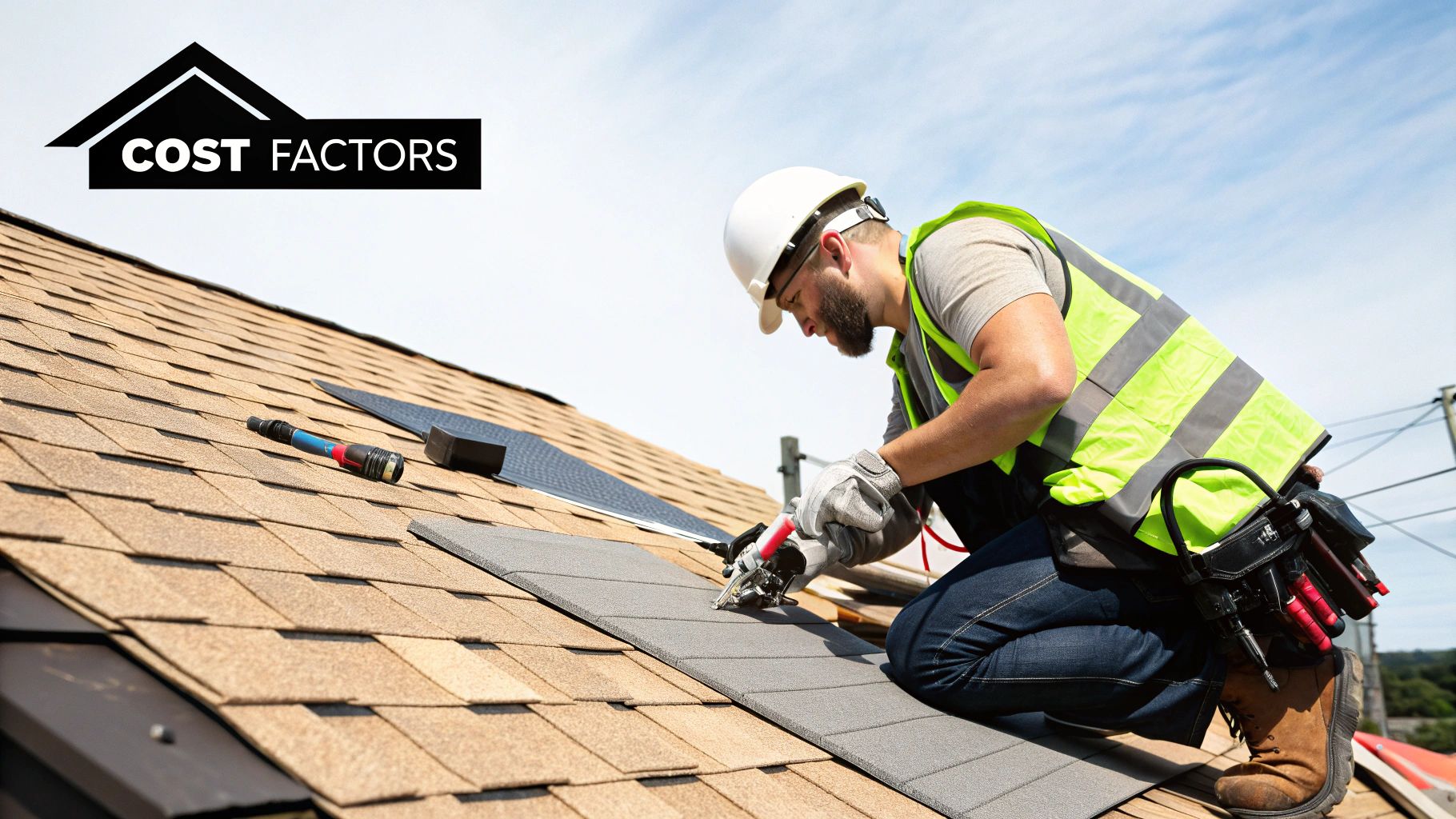
It’s a simple truth in our line of work: not all roofs are created equal, and neither are their repair bills. The material covering your home plays a huge role in what the final cost will be to fix a leak. Here at Evershield Roofing, our approach changes completely depending on whether we're working with traditional tiles, natural slate, or a modern flat roofing system.
Think of it like this. Fixing a puncture on a bicycle is a totally different job to mending a tyre on a massive tractor. They’re both tyres, sure, but the tools, time, and expertise needed are worlds apart. It’s exactly the same with roofs; each material brings its own unique challenges and, of course, its own repair costs.
Pitched Roofs: Tile and Slate Leaks
Pitched roofs are the classic sight across the UK, usually covered in either concrete tiles or natural slate. From the street, they might look quite similar, but when it comes to repairs, their costs can be surprisingly different.
Concrete or Clay Tile Roofs: These are generally the most straightforward and budget-friendly to fix. Very often, a leak is down to something as simple as a single cracked or slipped tile. For our team, this is usually a quick job, involving carefully removing the damaged tile and slotting a new one back in. A simple fix like this typically lands in the £150 – £250 range.
Natural Slate Roofs: Slate is a stunning, long-lasting material, but it’s also more delicate and expensive to work with. Slates can crack or slip just like tiles, but finding a perfect match for a roof that's been weathering for decades takes a specialist's eye. The work itself is more intensive, as slates can easily break if they aren't handled with care. A slate repair might cost between £200 – £400, reflecting the higher material cost and the skilled labour involved.
Flat Roof Leaks: Felt, EPDM, and GRP
Flat roofs, which you’ll often find on extensions, garages, and commercial buildings, throw a completely different set of challenges our way. Finding the source of a leak isn't always as obvious as spotting a single broken tile.
Fixing a leak is a vital part of home maintenance, but costs can vary enormously based on the roof type and how bad the leak is. The latest 2025 data shows a standard fix, which includes tracking down the leak, usually costs between £180 and £600. However, really tricky leaks, especially on flat roofs, can push those costs closer to £900. Labour rates in areas like London can also be 20–30% higher. An emergency call-out might start from £120, but the total bill can climb if the problem is urgent and needs a proper, lasting solution. You can get a better sense of these regional repair costs by reading this detailed roofing cost guide for 2025.
When you're dealing with a flat roof, the repair method is decided entirely by the material. A split seam in a traditional felt roof is sealed with heat, while a puncture in a modern EPDM rubber membrane needs a special patch kit. This is precisely why getting a professional assessment from our team is so important.
Here’s a rough guide to how those costs can vary:
- Felt Roofs: The classic "torch-on" felt is affordable, but it can get brittle over time. A patch repair is likely to be in the region of £250 – £450.
- EPDM Rubber Roofs: This material is really durable, but punctures can still happen. Fixing a small hole is relatively simple and often costs between £200 – £350.
- GRP Fibreglass Roofs: GRP is incredibly tough, but it can crack under a sharp impact. A localised repair involves sanding the area, applying new resin and matting, and then top-coating, which costs around £300 – £500.
Understanding these differences means you can have a much more informed conversation with our specialists about what your property truly needs.
A Practical Example: Fixing a Common UK Roof Leak
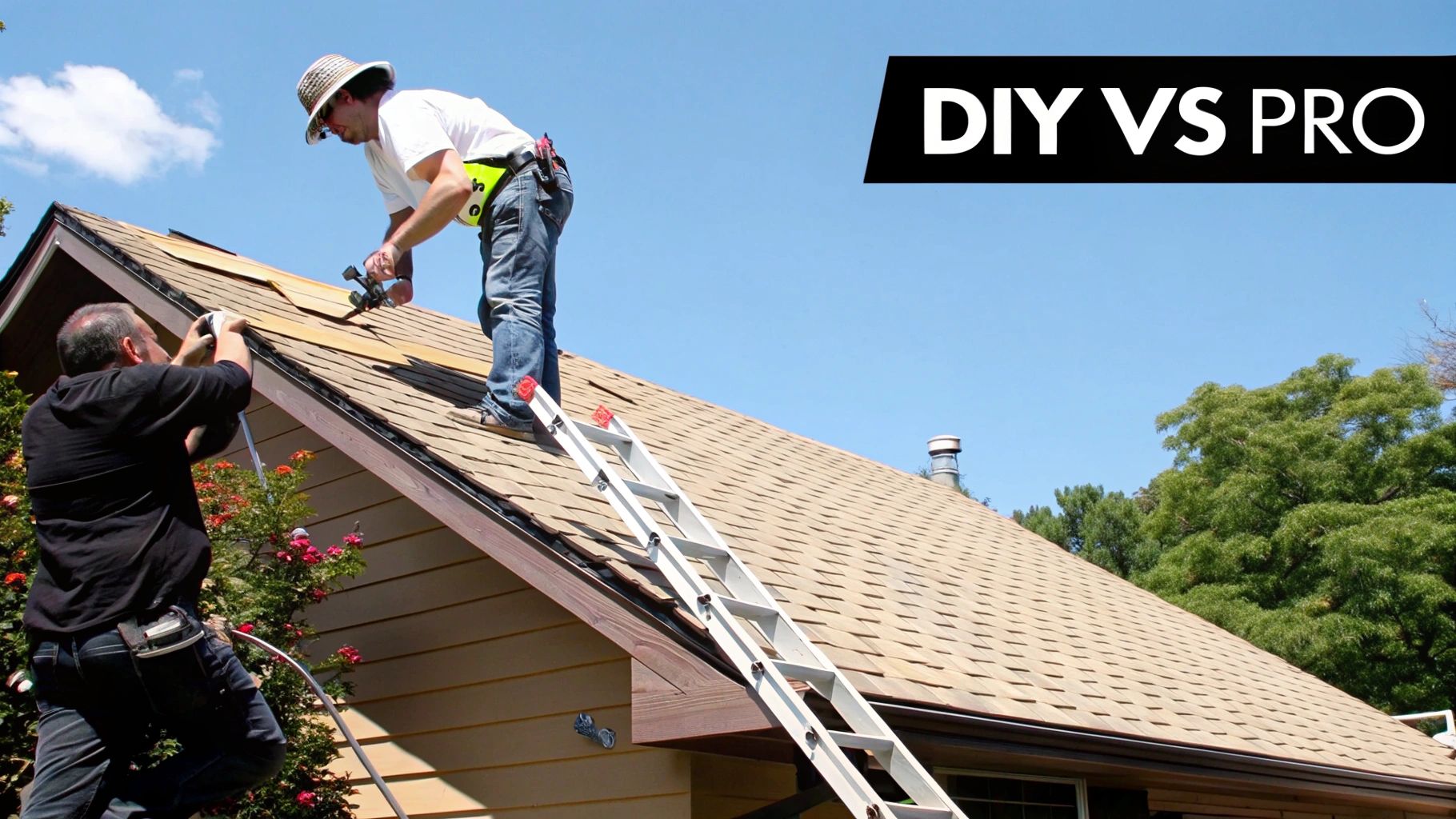
It’s one thing to talk about costs and technical terms, but seeing how we handle a real-life repair gives you a much clearer picture of what to expect when you call Evershield Roofing.
Here’s a common job we handle all the time here in the UK: fixing a leak on a standard tiled roof.
From Panic to Peace of Mind: A Recent Tiled Roof Repair
It began with a call we get often. This time, it was from a homeowner in Buckinghamshire who’d just spotted a dreaded damp patch growing on their bedroom ceiling. Naturally, they were worried sick about the potential damage and, of course, the cost. We got them booked in straight away.
When our technician arrived, the first job was a proper, methodical inspection. There's no guesswork involved; we need to find the exact entry point. Once safely up on the roof, he pinpointed the issue pretty quickly. A recent bout of high wind had lifted and shifted two concrete tiles, creating a small gap – but a gap big enough for rainwater to find its way in.
Our Step-by-Step Fix
With the culprit found, we walked the homeowner through exactly what needed doing and why. We find that being upfront and clear about the plan removes a lot of the stress from the situation.
The repair itself was straightforward and followed our standard procedure:
- Safety First: Before any tools come out, we secure the area around the house to make sure everything is safe.
- Careful Tile Removal: We gently lifted the two broken tiles and a few of the surrounding ones. This let us get a good look at the roofing felt underneath. The homeowner had called us quickly, which was great news – the felt was only slightly damp and hadn't torn.
- Replacing the Batten: The small piece of timber batten directly under the gap was showing early signs of damp. We replaced it. It's a small, preventative step that saves a much bigger, more expensive job down the line if rot were to set in.
- A Perfect Match: Finally, we fitted two new, colour-matched tiles. They were slotted in and secured, leaving a completely watertight seal that blended in perfectly with the rest of the roof. You'd never know we were there.
The whole job, from the moment we arrived to packing up the van, took less than three hours. The final bill was £220. Because the homeowner acted fast, they dodged the much higher costs of repairing rotten roof timbers or replastering a collapsed ceiling.
This is a classic example of how our professional, systematic approach can turn a worrying problem into a simple, straightforward fix. When you call us, you aren't just getting a patch-up job; you're getting the peace of mind that comes from a team that knows what they’re doing and respects your home.
Your Roof Leak Repair Questions Answered
That sinking feeling when you spot a water stain on the ceiling? It’s usually followed by a torrent of questions. It's completely normal to feel a bit overwhelmed, wondering about everything from insurance cover to how long your home will feel like a building site. We get it. Over the years at Evershield Roofing, we've heard every question imaginable, so we’ve put together some straightforward answers to the most common ones.
Will My Home Insurance Cover the Repair Cost?
This is almost always the first thing people ask, and the honest answer is: it depends entirely on why the leak started.
Most home insurance policies in the UK will cover damage from sudden, unexpected events. Think of a fierce storm tearing tiles from your roof or a branch falling and causing a hole. That’s what insurance is for.
Where they draw the line, however, is with problems that have built up over time. If a leak is the result of general wear and tear or a lack of basic upkeep, insurers typically won't pay out. To help with this, our team at Evershield Roofing can provide a detailed report identifying the precise cause of the leak, which is incredibly useful when you're speaking with your insurance company. You can find more information on preventing these issues in our essential roofing maintenance tips.
How Long Will the Repair Take?
We know you want your life—and your home—back to normal as quickly as possible. The good news is that most common roof leak repairs are sorted out faster than you might think.
- Minor Fixes: For a straightforward job like replacing a few cracked or dislodged tiles, our team can often be in and out in just 2-4 hours.
- Complex Issues: If the job is bigger, perhaps needing scaffolding for safe access or replacing a larger section of underlay and battens, it might take 1-2 days to get it done properly and ensure the fix is permanent.
Whatever the situation, we'll always give you a clear, realistic timeframe upfront in our quote. No surprises, no guesswork.
Our Guarantee to You
Absolutely. At Evershield Roofing, we stand firmly behind our workmanship and the quality of the materials we use. Every single repair we carry out comes with a guarantee, giving you complete peace of mind that the job is done right the first time.
Don't let questions and uncertainty add to the stress of a leak. For a clear, professional assessment and a guaranteed repair, contact our team at Evershield Roofing. Get your no-obligation quote by visiting us at https://www.evershieldroofing.co.uk.

